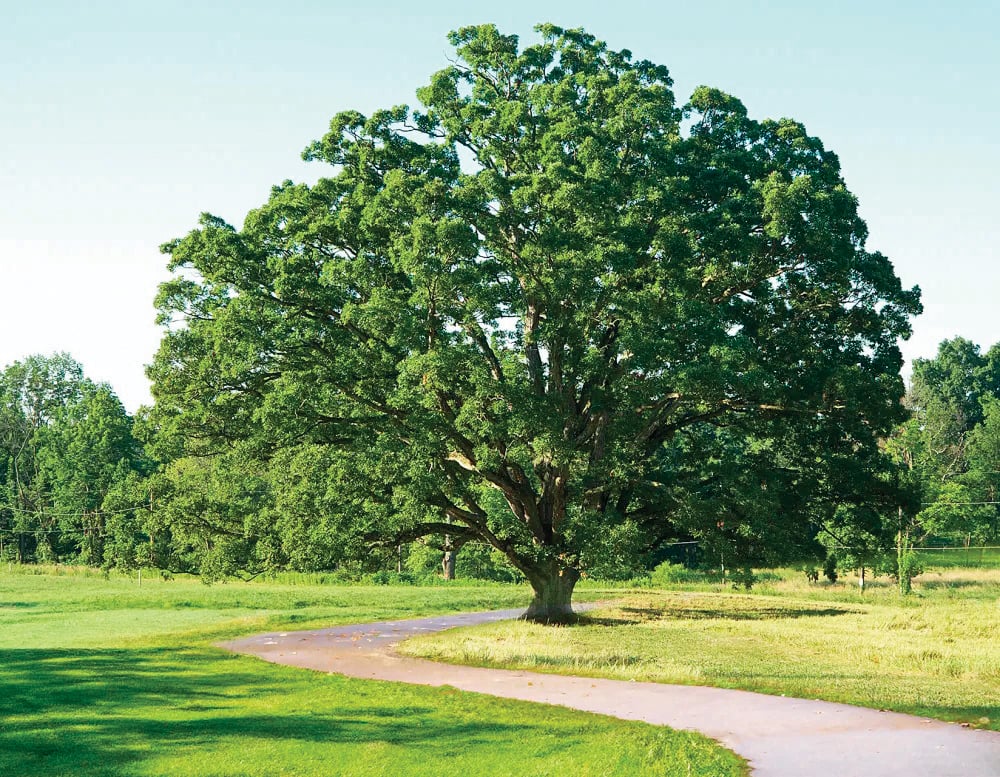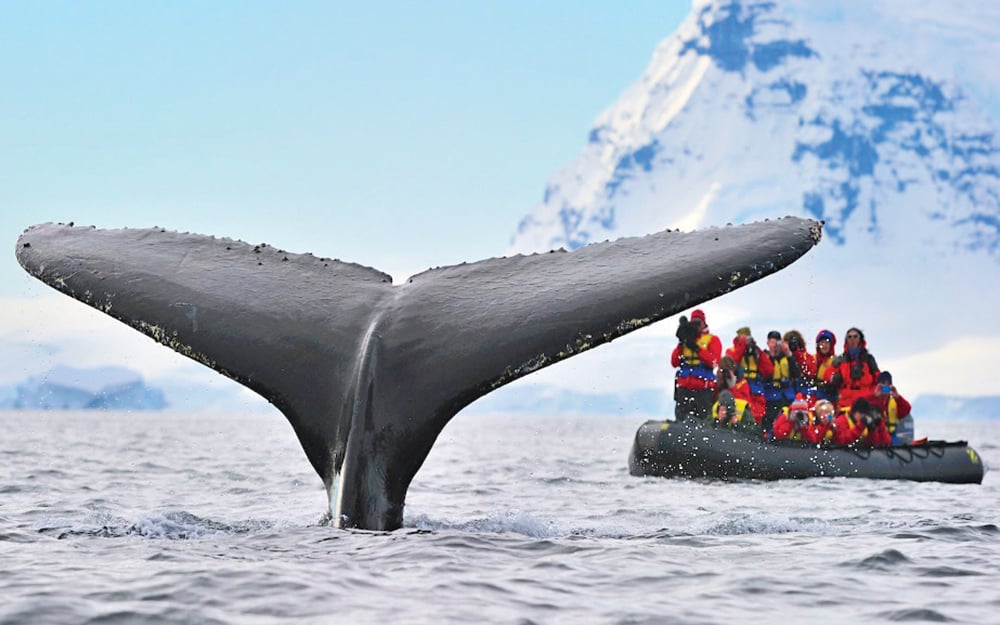
In Walt Whitman’s “Song of Myself,” a child asks the poet, “What is the grass?” Whitman doesn’t know any more than the child, but makes several guesses, and through this he conveys his cosmic vision. This Tu B’Shevat, my question is, “What is a tree?”
Grass lives too quickly to have a New Year. Whitman used the brief life of grass as part of his theme, and our prophets did the same (Tehillim 103; Yeshayahu 40). But trees are our elders. My daughter and I counted rings on a fallen white oak and lost count after 120, me’ah v’esrim. The silver maple in front of the house I was raised in will be here long after me. If anything should have a New Year, it is a tree.
For the ancient Semitic peoples, the large trees were like gods. We know this because the words for local big trees such as the oak (mainly Quercus calliprinos) and the terebinth (Pistacia terebinthus and P. palaestina) are from the same Semitic root used to refer to gods: Eilon, Eilah, Alon, Ilan, Ayil (as in ‘Eil Paran’). Similar to Eil, Eloah, Elohim (Ellaha for Arameans and Al-lah for Arabs). These all mean mighty, godly, divine.1 And they didn’t just name them that way but worshiped them. Our prophets railed against this. Trees had such apparent power and presence that they were a threat to monotheism.
But what about today? HaKadosh Baruch Hu knew we would one day get beyond that, and use scientific method to learn more. To the biologist, there is actually no hard definition of tree. This is for a few reasons: The ability to create ‘vascular cambium’ (xylem and phloem tubes), reinforced with lignin polymers and protected by a separate ‘cork cambium’ (bark), is shared by many plants that never grow tall or woody. And the plants that do grow that way are often not related: Plants in many different families have used these mechanisms to become tree-like, and have independently done so dozens of times. So if trees are not related and are not defined by the raw ability to grow tall, it is hard to define them.
For purposes of halacha, our definition is practical, as it often is: If new growth comes from a trunk and it lasts year to year – Nu, it’s a tree.2 The biologists basically agree.
So what does it mean for us that there are huge, long-lived organisms of this kind sharing the earth? It didn’t have to be this way. Why are these gentle giants here? Certainly, no one on earth has supplied us with so much fuel, food, and raw material as the trees. They have been our silent partners in everything, from learning about Good and Evil to the latest medicines. But they were not ordered to dominate the earth as we were, with brains and hands; they are quiet, slow, patient. The Ent (tree giant) in Tolkien’s The Two Towers goes by the nickname Treebeard, because his true name would take years to tell. Trees remind me of the Daoist philosophy of Wu Wei, or doing by not doing, action without struggle.3 They accept everything, and just grow.
Do today’s Jews need a reminder or corrective of this kind? Perhaps.The world’s three trillion trees remind us that our skill, knowledge and capital are not everything. We are gifted in our way, but they are superlative creatures: The sequoia named General Sherman has the volume of over 300 elephants and its branches are 6 feet thick; stand under it and see how “chashuv” you feel. The tamarack tree is contentat minus 80 degrees F. Black ironwood from Africa is twice as dense as oak and sinks in water. El Arbol de Tule, a cypress tree in Mexico, is 137 feet around. A fig in South Africa has roots 400 feet deep. A banyan tree in Anantapur, India has 4,000 trunks and is 623 feet across. The world’s trees lift quadrillions of pounds of water from the ground to the sky, every day. And, finally, there are bristlecone pines right now in the Sierra Nevada that saw 1,000 winters before Avraham Avinu was born.4
We celebrate trees not in flower or leaf but at their quietest, before the new sap rises. Like the way the Chodesh is celebrated when the moon is unseen. The calmest, most peaceful and patient beings on earth, you might say. Is that a Jewish value? Why be calm? There is so much to do and learn. We are taught to be zrizin, to rush to mitzvot.5
Anyone can rush. But we are also asked to calmly trust, despite all appearances. “Your might is in quietude and trust,” said Yeshayahu (30:15). “Be still, and see the salvation of Hashem” (Shmot 14:13). Twice a day we remind ourselves that we don’t actually live in a world of cosmic struggle. Not only do we state it but we tell ourselves Shema!, as if it’s assumed that we will have a hard time hearing it. “Hey!” we say. “Listen up! There is only one God.” It can be hard to remember this while we are struggling to optimize time and money, struggling to raise children right, struggling against enemies or illness. Before Avraham and at times after that, our ancestors looked over their shoulders in fear, lest their pagan deities were weakened or distracted and the demons would get them. You can go read their spells and incantations. So Moshe ordered us to repeat our mantra: There is only one God. There is no soap opera in Heaven. What could there be to worry about? Everything is in the hands of Heaven except the respect and awe we have for it, as Rabbi Hanina said.6 Shema. Be calm. There’s no “bad guy.” All is well. A God worth worshiping is a God in complete control.
The trees? They don’t need to say this twice a day. They know it. They live it. Every quiet day, every quiet millennium. I want to be like the trees.
Happy Tu B’Shevat.
Shimon Steiner is a Garden Educator with GrowTorah and Facilities Manager at Congregation Shaarei Orah.
1 Koehler-Baumgartner Hebrew and Aramaic Lexicon of the OT (1994), pp. 48-54. The Brown-Driver-Briggs lexicon of 1906 raised the alternative, based on an Arabic word, that the root for the tree names was Alef-Vov-Lamed, meaning “leading.” New scholarship seems not to support this.
2 Berachot 40a; Rambam, Hilchot Kilayim 5:19-20.
3 Dao De Jing, Ch. 37
4 National Park Service; United Nations Environment Programme; Guinness Book of World Records; Wood-database.com; Sciencenews.org.
5 Pesachim 4a
6 Brachot 33b











